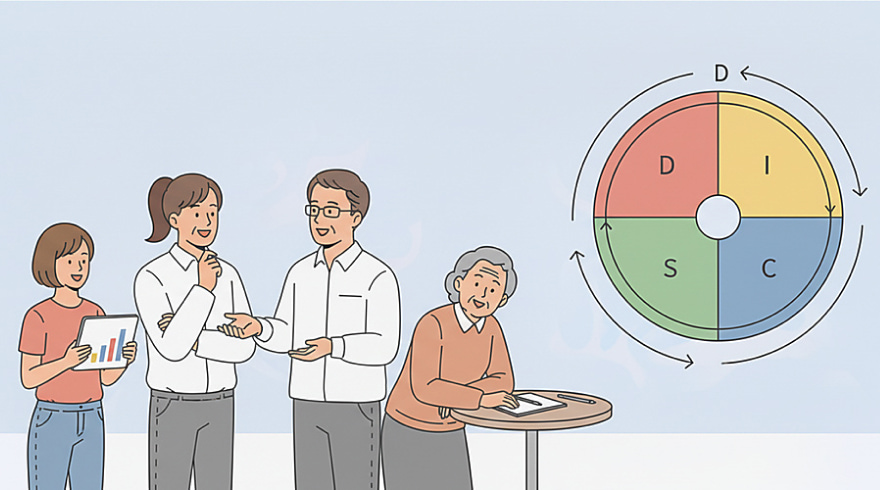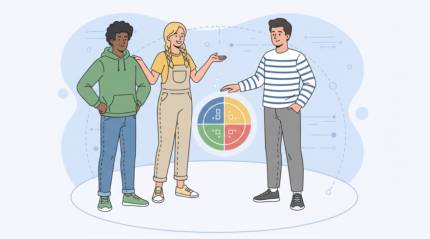Unlock Behavior Insights With a Complete Guide to the DISC Model
- 10 October 2025

The DISC framework translates observable behavior into a practical language, mapping how people communicate, decide, and collaborate. Originating from the research of psychologist William Moulton Marston, the model focuses on four dimensions: Dominance, Influence, Steadiness, and Conscientiousness. Rather than labeling people, DISC supplies a structured lens for understanding preferences under pressure and at rest. That clarity helps individuals improve self-management while giving teams a shared vocabulary for feedback, alignment, and performance.
Convenience and inclusivity have propelled modern adoption because organizations need scalable tools that work for everyone. Many platforms now provide a DISC assessment free option, allowing newcomers to explore the model without barriers. This broad access removes cost as a gatekeeper, letting learners and leaders sample the method before committing to deeper programs.
Clarity improves further when the process is simple, transparent, and quick to complete. You can explore a DISC personality test free route as a low-risk first step, broadening your understanding. With fast feedback, people build momentum, and that momentum often becomes the catalyst for coaching, team workshops, and long-term development initiatives.
How DISC Questions Work and What Reliable Reports Look Like
Every DISC instrument presents forced-choice or Likert-style items that map your most natural behaviors to four quadrants. Responses focus on tendencies, not abilities, and they compare context-dependent patterns such as pace, social energy, and problem-solving style. Good questionnaires avoid trick wording and instead use clear, everyday statements, which increases accuracy and user confidence.
Transparent access helps you evaluate methodology without guesswork or hype. Some providers host a DISC test for free that mirrors core dimensions, offering a clear baseline. When the interface removes friction and the instructions are plain, respondents answer more honestly, improving the signal in the final profile.
Quality matters even when you are just exploring or piloting a tool with a small group. When trying a free DISC personality test, look for transparent scoring descriptions to increase trust. Credible reports include definitions, example behaviors, and context for each scale, so readers can recognize themselves in the results instead of fighting abstract jargon.
Key Benefits for Individuals and Teams Using DISC
Self-awareness is the springboard for better communication, influence, and collaboration. With a behavioral map in hand, people can identify conflict triggers, refine their messaging, and anticipate how others prefer to work. Leaders gain a practical toolkit for situational flexibility, coaching conversations, and role design that aligns responsibilities with natural strengths.
Starting with a free DISC test helps you surface behavioral patterns quickly, setting a productive tone. Even a brief snapshot can highlight stress responses, decision speed, and detail orientation, which are vital clues when stakes are high and time is short.
Team dynamics improve when everyone shares a neutral, descriptive language for behavior. Teams adopting a free DISC assessment test can align communication norms early, reducing friction. This shared framework supports smoother handoffs, clearer expectations, and more empathetic debates that prioritize outcomes over personal style clashes.
- Reduce miscommunication by matching message format to audience preferences.
- Improve meetings with pacing that respects both fast movers and reflective thinkers.
- Streamline hiring and onboarding through role-to-style fit and clear coaching plans.
- Elevate feedback quality by focusing on observable behaviors rather than assumptions.
How to Take a DISC Assessment and Interpret Your Results
Preparation is simple: choose a calm moment, read each item carefully, and answer for how you typically behave, not how you wish you behaved. Many reputable sites host a free DISC assessment online with instant reports, streamlining the experience. If you’re completing the assessment for work, verify whether your organization has a preferred provider to maintain consistency across teams.
| Report Element | What It Explains | Why It Matters | Pro Tip |
|---|---|---|---|
| Primary Style | Your dominant behavioral tendency across contexts | Guides communication tone and decision pacing | Match messaging to counterpart’s pace and directness |
| Secondary Style | Complementary traits that modulate your primary profile | Reveals flexibility and situational range | Lean on this style when the environment shifts |
| Adapted vs. Natural | Differences between daily behavior and innate preference | Signals potential stress or energy drain | Adjust workload or routines to reduce friction |
| Communication Tips | Do’s and Don’ts tailored to your style blend | Improves alignment and trust in conversations | Turn tips into team norms and meeting checklists |
Reading your profile is only the starting point, and sustainable changes come from deliberate practice. After finishing a free online DISC assessment, review the result sections that translate scores into daily actions. Convert insights into micro-habits like altering email subject lines for clarity or pacing proposals with clear milestones and revisit your notes after two weeks to track progress.
- Choose one relationship to pilot new tactics for two weeks.
- Pair each insight with a measurable behavior change.
- Debrief with a peer to reinforce accountability and nuance.
Use Cases, Best Practices, and Ethical Considerations
DISC shines when used as a conversation starter, not a verdict. Hiring teams can complement interviews with structured behavioral insights, sales managers can tailor discovery questions to buyer temperament, and educators can coach students toward collaborative resilience. Respect for privacy and consent is essential, as is clarity about how results will and will not be used.
For hiring pipelines, a DISC free test can serve as an initial screen, highlighting interpersonal tendencies. When combined with structured interviews and work samples, the composite view becomes comprehensive without over-relying on any single signal.
Learning programs, retreats, and classrooms benefit from shared language that lowers defensiveness and boosts curiosity. Educators often assign a DISC assessment free online test during orientation, encouraging self-awareness early. In every setting, facilitators should emphasize that styles describe preferences rather than potential, preventing labels from limiting growth.
- Use results to tailor onboarding plans and coaching roadmaps.
- Reassess annually to reflect role changes and shifting environments.
- Document team norms that translate profiles into daily practices.
- Safeguard data and set clear retention and sharing policies.
FAQ: Common Questions About Free DISC Assessments
- How accurate are no-cost DISC assessments?
Short, well-designed questionnaires can deliver a surprisingly reliable snapshot when instructions are clear and respondents answer candidly. Most tools generate a free DISC profile that outlines dominant and secondary traits, guiding reflection. For mission-critical decisions, consider validating insights with a longer assessment and multi-rater feedback.
- How long does it take to complete the assessment?
Most versions take 7–12 minutes, and the fastest options are under five minutes. Many libraries curate a DISC assessment test free within resource hubs, lowering access barriers. If you rush or multitask, you may introduce noise, so pick a calm window and read carefully.
- Should I answer based on work or personal behavior?
Answer based on how you typically act in the context you care about most right now. For mixed roles, consider completing one profile for your current job and another for home life, then compare similarities and gaps to sharpen your self-awareness.
- Can DISC be used for team-building workshops?
Yes, and it often becomes the backbone of engaging off-sites and retrospectives. Facilitators can translate insights into games, role-plays, and communication charts that move beyond theory into durable habits and measurable improvements.
- What should I do after receiving my results?
Pick one behavior to practice for two weeks and record outcomes in a simple journal. Translate insights into meeting norms, email guidelines, and feedback rituals so the language becomes lived practice across your team, not just a one-time report.
To get started confidently, explore accessible platforms, compare report clarity, and turn insights into small, repeatable actions that compound over time.



